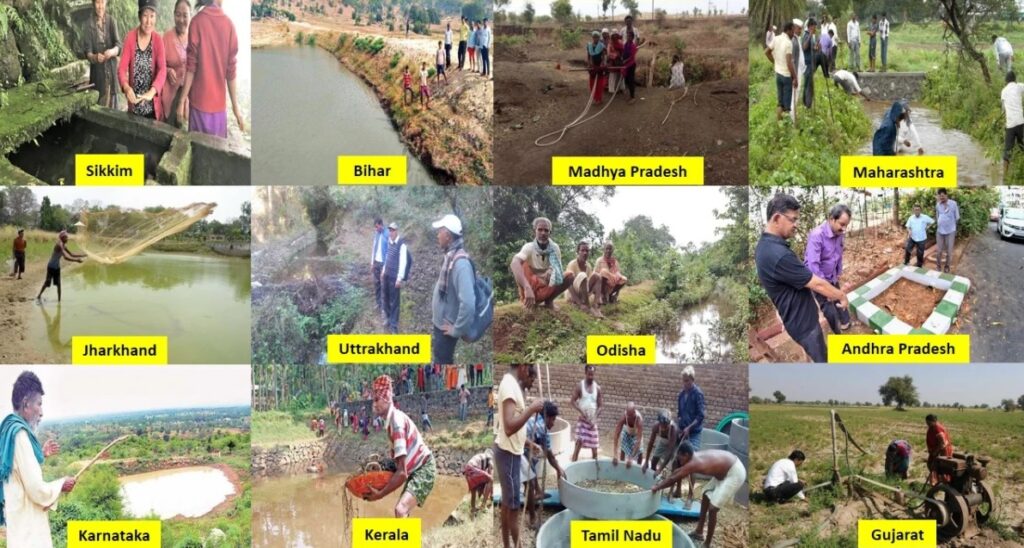
India’s coastal communities face unique challenges regarding water availability and management. With fluctuating monsoons, rising sea levels, and increasing salinity, these regions require innovative water storage solutions to ensure sustainable access to clean water. This article explores various approaches to enhance water storage in India’s coastal areas, addressing both immediate needs and long-term sustainability.
Understanding the Challenges
Coastal communities in India, such as those in Kerala, Tamil Nadu, and Gujarat, experience a mix of water scarcity and excess. During the monsoon season, heavy rainfall can lead to flooding, while prolonged dry spells can deplete freshwater resources. Additionally, rising sea levels threaten groundwater quality by causing saltwater intrusion, making traditional water sources increasingly unreliable.
Rainwater Harvesting
One of the most effective and sustainable methods for water storage in coastal regions is rainwater harvesting. This technique involves collecting and storing rainwater from rooftops and other surfaces, which can then be filtered and used for drinking and irrigation. Implementing rainwater harvesting systems not only reduces dependence on existing water supplies but also mitigates flooding during monsoon seasons. Communities can construct simple systems, including gutters, downspouts, and storage tanks, to maximize rainwater capture.
Desalination Technologies
With saline intrusion becoming a significant issue, desalination technologies offer a promising solution for coastal communities. Modern desalination processes, such as reverse osmosis, can convert seawater into potable water. While energy-intensive, advancements in renewable energy sources, like solar and wind, are making desalination more sustainable. Small-scale desalination units can be deployed in rural coastal areas, providing a reliable source of freshwater while reducing the burden on local ecosystems.
Community-Based Water Storage Systems
Empowering local communities to manage their water resources effectively is essential for long-term sustainability. Community-based water storage systems, such as village tanks or community ponds, can be constructed and maintained by local residents. These systems not only serve as storage for rainwater but also foster a sense of ownership and responsibility among community members. Such initiatives often include educational programs to teach best practices in water management and conservation.
Sand Dams and Check Dams
Sand dams and check dams are innovative methods for capturing and storing rainwater in arid coastal regions. Sand dams involve constructing a barrier across a riverbed, allowing sand to accumulate during floods. This sand retains moisture, which can be accessed during dry periods. Similarly, check dams slow down water flow, allowing sediments to settle and creating small reservoirs. Both methods enhance groundwater recharge, providing communities with a more stable water supply throughout the year.
Green Infrastructure
Integrating green infrastructure into urban planning can significantly improve water management in coastal areas. Techniques such as permeable pavements, green roofs, and rain gardens help absorb and store rainwater, reducing runoff and flooding. By creating green spaces, communities not only enhance water retention but also promote biodiversity and improve overall environmental health.
Smart Water Management Systems
Adopting smart technologies can revolutionize water storage and management in coastal communities. Utilizing sensors and data analytics, smart water management systems can monitor water levels, quality, and usage in real-time. This technology can optimize the distribution of water resources, alerting users to potential shortages or contamination. Implementing such systems encourages efficient water use and reduces waste, crucial for communities facing water scarcity.
Conclusion
Innovative water storage solutions are critical for the resilience of India’s coastal communities in the face of climate change and water scarcity. By adopting methods such as rainwater harvesting, desalination, community-based systems, and smart technologies, these communities can secure their water supply for future generations. Promoting sustainable practices and robust governance will further enhance the effectiveness of these solutions, ensuring that coastal populations thrive despite the challenges they face. Through collaboration and innovation, India can pave the way for sustainable water management in its coastal regions, safeguarding precious resources for all.


